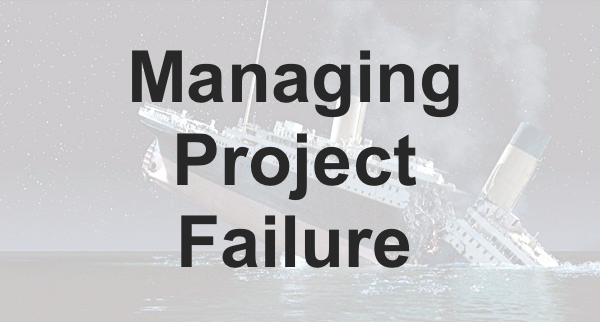
https://tensix.com/author/tensixadmin/
When projects begin to slip management often chooses not to tack, but persists along its course until the project becomes a complete bust. But there are ways to manage an off track project to avoid the worst possible outcome.
Organizations too often linger on projects that are quite evidently failing. The problem most likely is an emotional attachment to the project that keeps it going until sunk costs become significant.
Managers that face difficult decisions frequently choose to “accept a high probability of making things worse in exchange for a small hope of avoiding a large loss.” Daniel Kahneman in the book “Think, Fast and Slow” continues “risk taking of this kind often turns manageable failures into disasters”.
This article describes how to properly manage failure so that an off target project does not become a complete implosion.
Loss Cutting Considerations
There are several difficult questions to answer in the loss cutting decision-making process. The importance and impact of the project to your organization should be considered. Is failure life-threatening to your organization? Or is your organization’s reputation on the line? Has your organization made commitments to the government? Is it possible to terminate the project for a limited liability? Is it possible to physically “mothball” the infrastructure or, perhaps, even dismantle it? Answers to these questions should have a profound impact on the decision to terminate a project.
The 15% Loss Cutting Rule
Make the decision to cut losses sooner rather than later. Early detection of the project gone awry is important. This requires having a recognition that the project is deteriorating, a sound view of the projects probable evolution, and a cut losses threshold.
One handy rule states: “cancel any project when its cost growth exceeds 15 percent.” Why 15 percent? Well, most projects that fail completely miss the target, far worse than a 15% overrun. Successful projects or average projects remain within that boundary. So 15% is a good heuristic threshold for taking decisive action to conclude a languishing project.
Avoiding Persistence On Failed Projects
Make certain someone that has authority can provide an impartial arbitration on the prospective failing project. This person should not have emotional baggage or a historical attachment to the project. Larger organizations that have a widespread footprint should include decision makers from other geographic locations. And these personnel should be included on regular project reporting and review updates.
When a project is in jeopardy weigh your options carefully. Consider the projects importance to the lifeline of your organization. All options are on the table if the organizations survival is in peril. Otherwise more subtle corrections are appropriate, however, they still need to be decisive enough to change the course of events.
Leadership Changes
Removing a project manager is a difficult decision. A new manager would veer away from previous decisions. However, the current project manager has established relationships with team members and other stakeholders. A probable solution is to retain the project manager and bring onboard additional leadership that can drive toward the desired changes.
Summary
When a project appears to veer off course there are numerous questions to consider and weigh. In particular, is the organization itself in peril? And can the project terminate with limited liability?
It is better to ask these questions sooner rather than later. You want the decision to cut losses to come early in the project lifecycle. Cutting losses at 15% cost growth is a good threshold to consider. And this cut losses decision is best made by an impartial judge of the project. That is someone not emotionally connected to the projects outcome.
The process of changing direction often includes leadership updates. But leadership change comes at the expense of established relationships. A better answer is to retain the project manager and insert additional authoritative driving leadership.
For more insight on project failure management consider Jeremie Averous’ “Practical Project Risk Handbook for Project Managers”.
